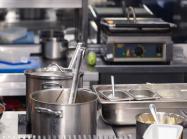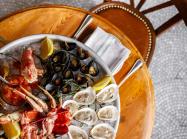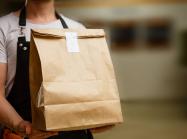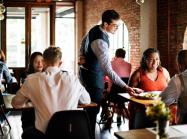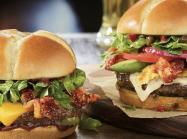“As crazy as it sounds, I’m grateful we went through it. I think it made us a better company, and I think it continues to make our profession a better profession,” he adds. Yet, he admits it will take time to heal after losing a generation of foodservice workers. “A lot of people left the business. That’s a lot of knowledge lost, with no system set in place to pass on that knowledge.”
One way Kaysen chose to pass on some of his culinary expertise was publishing a cookbook, which seems to be on every chef’s bucket list. Fulfilling the dream appears to mark a milestone—a tangible way to say, “I’ve made it as a chef, and my recipes will live on forever.”
But for Kaysen, the concept of his debut cookbook “At Home” began as a way to connect with his guests during a time when they couldn’t dine inside his Minneapolis-based restaurants, including Demi, Bellecour Bakery, Mara, and Socca Cafe. And, of course, Spoon and Stable—named after Kaysen’s bad habit of “borrowing” spoons from restaurants and “forgetting” to return them. (He once told Food and Wine Magazine he has a collection of nearly 500 spoons pinched from restaurants around the world, many of which are displayed at his restaurant.)
The two-time James Beard award-winning chef got his start cooking in the kitchen with his grandmother Dorothy, who he pays tribute to in his Midwestern-inspired cookbook. Kaysen self-published “At Home” under his label Spoon Thief Publishing (a fitting name) in October 2022. From Swedish pancakes to The Perfect Pot Roast with kale and squash salad, Kaysen walks readers through recipes he cooks at home for his family in addition to dishes passed down through generations.
“Writing a cookbook can be a really hard experience for chefs,” he admits. “I’m a good chef, and a good restaurant owner, but I hate to write. I love to journal, but I hate to write.”
The idea for compiling his recipes in a written format stemmed from a live, interactive mealtime series called “GK at Home,” which he launched in 2020 to virtually welcome guests into his home kitchen. The first class garnered about 100 attendees, and by the third, Kaysen’s class was averaging more than 1,000 people, cooking alongside him in their homes. After reopening his restaurants, however, Kaysen no longer had time to host GK at Home, which sparked the idea to turn all the content he created into a cookbook.
“We were testing out the recipes with real people, so we were learning in real time, ‘oh, you know what, you can’t just say salt, tell them what kind of salt; you can’t just tell them two to four minutes, you’ve got to tell them what it’s supposed to look like, what does it feel like,” Kaysen notes. “We just started to learn all these really fascinating things that as a chef, when I cook at home, I don’t even think about.”
“Now I get messages on Instagram from people that have cooked dishes from my book, take a picture of their dish and the book, and it looks the same. And it’s like, oh my god, it worked,” he adds. “I really wanted to create a book that people will use; a lot of chefs create cookbooks that nobody will use.”
Kaysen admits reopening his restaurants felt “50 times more difficult” than closing them down. Remembering routines and re-training employees felt especially daunting as customers returned in droves, hungrier than ever for hospitality and a greatly-missed dining experience.
“I think COVID did give a peek into our ecosystem where people could look at it and say, wow, I guess I didn’t realize all of this was associated with a restaurant,” he says.
Embodying hospitality
Kaysen’s foodservice career kicked off when he was 15 years old and began working at a Subway in Edina, Minnesota. There, he learned the value of being detail-oriented, especially when it came to interacting with guests. When regulars came in, Kaysen had their orders memorized—including a tuna fish sandwich for George Serra, the owner of the fast-casual pasta restaurant next door. But every Saturday, Kaysen would watch Serra walk out the door and throw the sandwich in the trash. It turned out Serra was evaluating Kaysen’s work ethic and customer service skills.
“In his mind, he was just sort of watching me interact with these guests or customers,” he recalls. Serra told Kaysen he had a “real gift with food,” and that he had the potential to cook for a living. Kaysen went on to work for Serra at Pasta Time, where he “fell in love with everything about this business, and I knew that I would do this the rest of my life,” he says.
At 28, Kaysen began working with famed French chef Daniel Boulud, serving as executive chef and director of culinary operations and overseeing Cafe Boulud in Palm Beach, Florida; Toronto; and New York City. He likens that time in his life to earning his Ph.D. in the food business, and says Boulud “embodies what hospitality is all about.”
“He has that talent that very few people have, that he connects with so many people throughout his company that are not only willing to walk through a wall for him, but are inspired by him and through him on a daily basis,” Kaysen says about Boulud.
In addition to emulating that sentiment with his chefs and team members at his own restaurants under Soigne Hospitality, Kaysen also brought back with him the French idea of prioritizing a locally- and seasonally-driven menu.
“For us, we took a pretty prominent stance in understanding the grain culture here,” he says. “And in our case, pastas, the bread program that we focus on, the proteins such as duck when that’s in season, pork, which is always in season … we tend to kind of stay in our Midwestern lane that way.”
For example, one of the sides at Spoon and Stable is creamy spinach with cheese curds—which might not work as well in a place like New York, Kaysen notes.
“We want to be a little bit playful, we want to be a little bit whimsical, but we also just really want the food to be delicious,” he adds. “And ultimately, I think that’s what it comes down to—how do you create delicious food?”

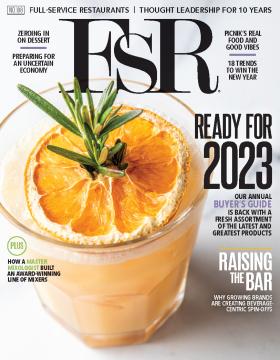

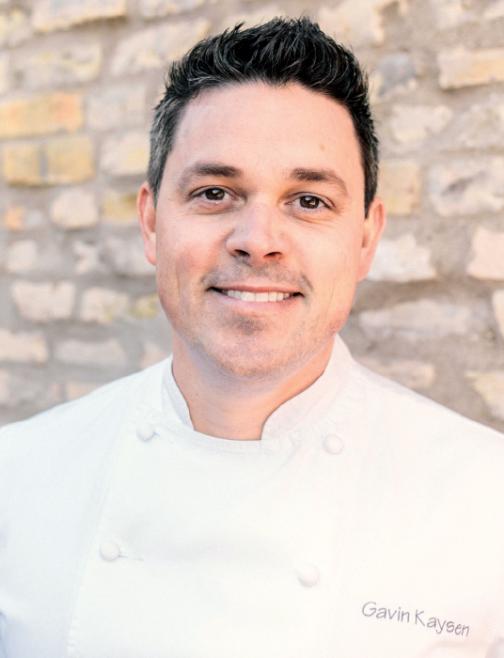
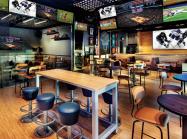
%20(1)_099fe.png)
